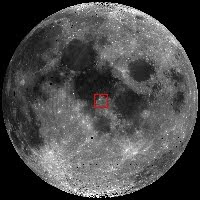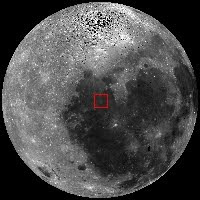
Former Presidential Science Advisor John H. Marburger (1941-2011).
Paul D. Spudis
The Once & Future Moon
Smithsonian Air & Space
Recently deceased John H. Marburger, former Science Advisor to President George W. Bush and Director of the White House Office of Science and Technology Policy, had a long and distinguished career as a scientist, an administrator and public servant. I knew him through his advocacy and involvement in the development of the Vision for Space Exploration. His passing is a loss for America.
The development of the VSE was a direct outgrowth of the devastating loss of the Shuttle Columbia and its crew of seven on February 1, 2003. When questions arose over the need for a human space program, members of the Bush administration undertook a year-long internal study on the purpose and direction of America’s civil space effort. Why do we send people into space? What are our ultimate goals? Many options were on the table during this period of soul-searching.
Post-Columbia, it was very apparent to those who knew and understood the numbers that regardless of direction, significant increases in NASA’s funding were not likely. Any new mission would have to fit an essentially no-growth agency budget (with two wars raging and the explosive growth of entitlement spending, the federal budget could not be stretched enough to cover a doubling of the agency budget – which even if possible, was less in real dollars than Apollo had 40 years earlier). Thus the question became: Given that additional new money would be extremely limited, how can we safely move beyond low Earth orbit? The answer was to maximize our access to space by learning how to use what is available in space to create new capability.
A chemical-propulsion human mission to Mars might have a total mass in Earth orbit of some 500 tons; more than 80% of that mass is fuel for the journey. There are two ways to lower the costs of such a mission: 1) significantly lower the costs of launch from Earth; 2) identify and make fuel from mining sites in space. We’ve struggled off and on with the former but have never attempted the latter. Moreover, learning how to use the resources of space is an essential skill to master for long term, sustainable human presence in space.
The Vision for Space Exploration (VSE) was unveiled at NASA headquarters by President Bush. The January 2004 mission announcement was groundbreaking in that the President identified the use of lunar resources to help create and advance a sustainable human presence, specifically, the production of fuel from lunar materials for beyond LEO missions. It was the first time such a concept had been mentioned in any policy declaration. Subsequently, that part of Bush’s speech was proclaimed by many commenting on, or working for the space community, as meaning “building the Mars ship on the Moon.” That characterization confused the clear message that had been sent – one of using what is in space (resources) to create new space faring capabilities (product) starting on the Moon.
Jack Marburger was deeply involved in the year-long space policy study and it was clear that his insight and vision were more acute than many others working in the White House and at NASA. I remember meeting with him in his office at OSTP in mid-2004, some months after the VSE had been announced. At that time, he was aware of the concept of using space resources and was still formulating the implications and possibilities of such an activity. We discussed the idea of water as the “currency” of spaceflight, being useful for life-support consumables, energy storage and rocket fuel. I described for him our then-current knowledge (which at the time was extremely meager but promising) of the presence of ice at the poles of the Moon and the likelihood that appreciable quantities of water might be harvested there.
In the spring of 2006, Jack gave a keynote address at the 44th Goddard Space Symposium. In his speech he pointedly asked, “Why do we have a space program?” Rather than repeating the usual clichés about exploring the unknown or inspiring the next generation, Jack articulated a clear policy direction by saying, “questions about the Vision boil down to whether we want to incorporate the Solar System in our economic sphere, or not.” He specifically noted that such a motivation is vastly different from the one that propelled America to the Moon in the 1960s, saying, “The Moon has unique significance for all space applications for a reason that to my amazement is hardly ever discussed in popular accounts of space policy.” The Moon is the nearest, most accessible useful object beyond low Earth orbit and that is why it is the first step of the VSE. We go to the Moon not to repeat Apollo but to create new capability. Jack understood this clearly.
The speech Marburger gave at that symposium stands today as one of the clearest and most “visionary” articulations of a future in space ever given. It was nothing less than the declaration of a new paradigm for spaceflight, one in which we go and do in space whatever jobs we can imagine or need. This capability is created by learning to use what we find in space, reducing the need to launch (at such prohibitive cost) everything from the bottom of the deepest gravity well in the inner Solar System. As long as we are held hostage to this old template, we will always be mass- and power-limited in space and thus limited in capability.
Jack Marburger understood the importance of and need for human exploration. He sought innovative ways to create a sustainable and affordable space program. Those of us who believe in this vision note his passing with sadness, but also with renewed determination to pursue this viable path. We honor his memory and salute his contributions.
The development of the VSE was a direct outgrowth of the devastating loss of the Shuttle Columbia and its crew of seven on February 1, 2003. When questions arose over the need for a human space program, members of the Bush administration undertook a year-long internal study on the purpose and direction of America’s civil space effort. Why do we send people into space? What are our ultimate goals? Many options were on the table during this period of soul-searching.
Post-Columbia, it was very apparent to those who knew and understood the numbers that regardless of direction, significant increases in NASA’s funding were not likely. Any new mission would have to fit an essentially no-growth agency budget (with two wars raging and the explosive growth of entitlement spending, the federal budget could not be stretched enough to cover a doubling of the agency budget – which even if possible, was less in real dollars than Apollo had 40 years earlier). Thus the question became: Given that additional new money would be extremely limited, how can we safely move beyond low Earth orbit? The answer was to maximize our access to space by learning how to use what is available in space to create new capability.
A chemical-propulsion human mission to Mars might have a total mass in Earth orbit of some 500 tons; more than 80% of that mass is fuel for the journey. There are two ways to lower the costs of such a mission: 1) significantly lower the costs of launch from Earth; 2) identify and make fuel from mining sites in space. We’ve struggled off and on with the former but have never attempted the latter. Moreover, learning how to use the resources of space is an essential skill to master for long term, sustainable human presence in space.
The speech Marburger gave at that symposium stands today as one of the clearest and most “visionary” articulations of a future in space ever given.
The Vision for Space Exploration (VSE) was unveiled at NASA headquarters by President Bush. The January 2004 mission announcement was groundbreaking in that the President identified the use of lunar resources to help create and advance a sustainable human presence, specifically, the production of fuel from lunar materials for beyond LEO missions. It was the first time such a concept had been mentioned in any policy declaration. Subsequently, that part of Bush’s speech was proclaimed by many commenting on, or working for the space community, as meaning “building the Mars ship on the Moon.” That characterization confused the clear message that had been sent – one of using what is in space (resources) to create new space faring capabilities (product) starting on the Moon.
Jack Marburger was deeply involved in the year-long space policy study and it was clear that his insight and vision were more acute than many others working in the White House and at NASA. I remember meeting with him in his office at OSTP in mid-2004, some months after the VSE had been announced. At that time, he was aware of the concept of using space resources and was still formulating the implications and possibilities of such an activity. We discussed the idea of water as the “currency” of spaceflight, being useful for life-support consumables, energy storage and rocket fuel. I described for him our then-current knowledge (which at the time was extremely meager but promising) of the presence of ice at the poles of the Moon and the likelihood that appreciable quantities of water might be harvested there.
In the spring of 2006, Jack gave a keynote address at the 44th Goddard Space Symposium. In his speech he pointedly asked, “Why do we have a space program?” Rather than repeating the usual clichés about exploring the unknown or inspiring the next generation, Jack articulated a clear policy direction by saying, “questions about the Vision boil down to whether we want to incorporate the Solar System in our economic sphere, or not.” He specifically noted that such a motivation is vastly different from the one that propelled America to the Moon in the 1960s, saying, “The Moon has unique significance for all space applications for a reason that to my amazement is hardly ever discussed in popular accounts of space policy.” The Moon is the nearest, most accessible useful object beyond low Earth orbit and that is why it is the first step of the VSE. We go to the Moon not to repeat Apollo but to create new capability. Jack understood this clearly.
The speech Marburger gave at that symposium stands today as one of the clearest and most “visionary” articulations of a future in space ever given. It was nothing less than the declaration of a new paradigm for spaceflight, one in which we go and do in space whatever jobs we can imagine or need. This capability is created by learning to use what we find in space, reducing the need to launch (at such prohibitive cost) everything from the bottom of the deepest gravity well in the inner Solar System. As long as we are held hostage to this old template, we will always be mass- and power-limited in space and thus limited in capability.
Jack Marburger understood the importance of and need for human exploration. He sought innovative ways to create a sustainable and affordable space program. Those of us who believe in this vision note his passing with sadness, but also with renewed determination to pursue this viable path. We honor his memory and salute his contributions.
Originally published July 30, 2011 at The Once & Future Moon, (Smithsonian Air & Space). Dr. Spudis is a Senior Staff Scientist at the Lunar and Planetary Institute in Houston. The opinions expressed are better informed than average.

















































